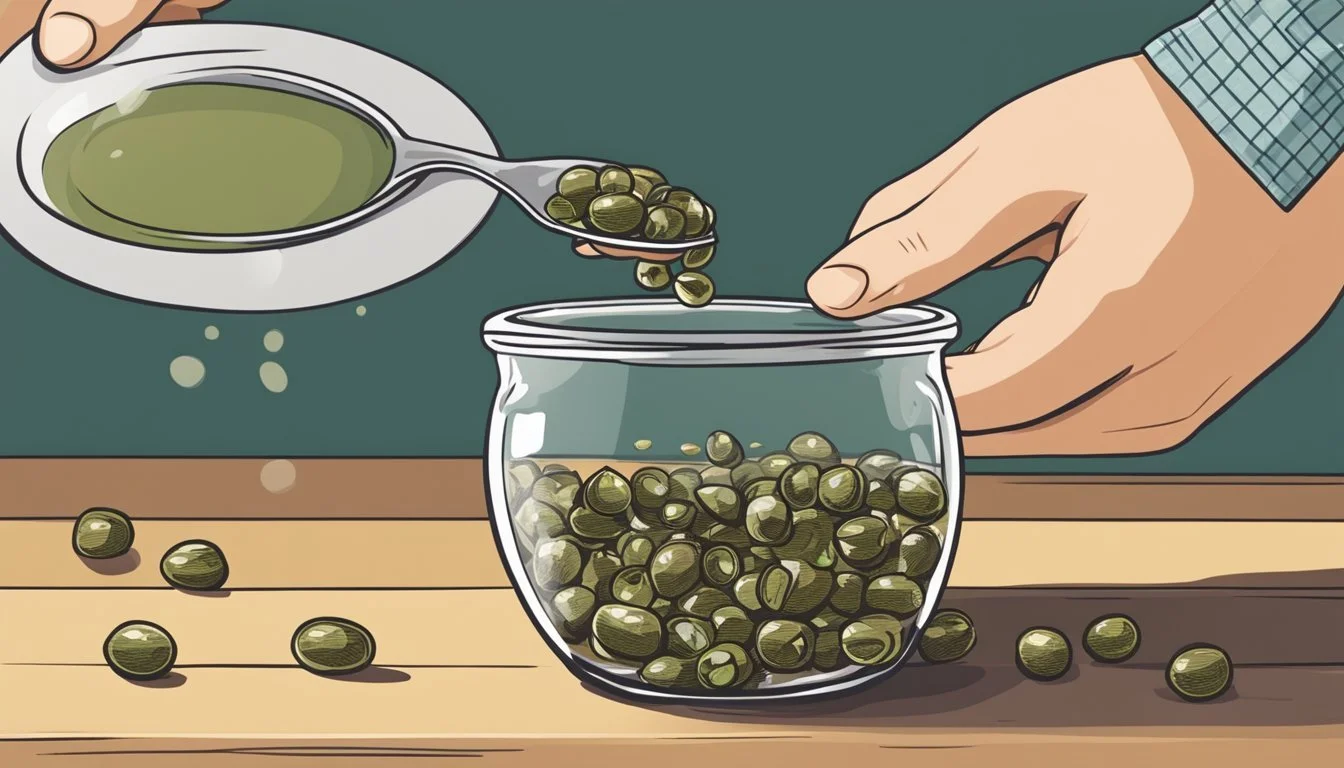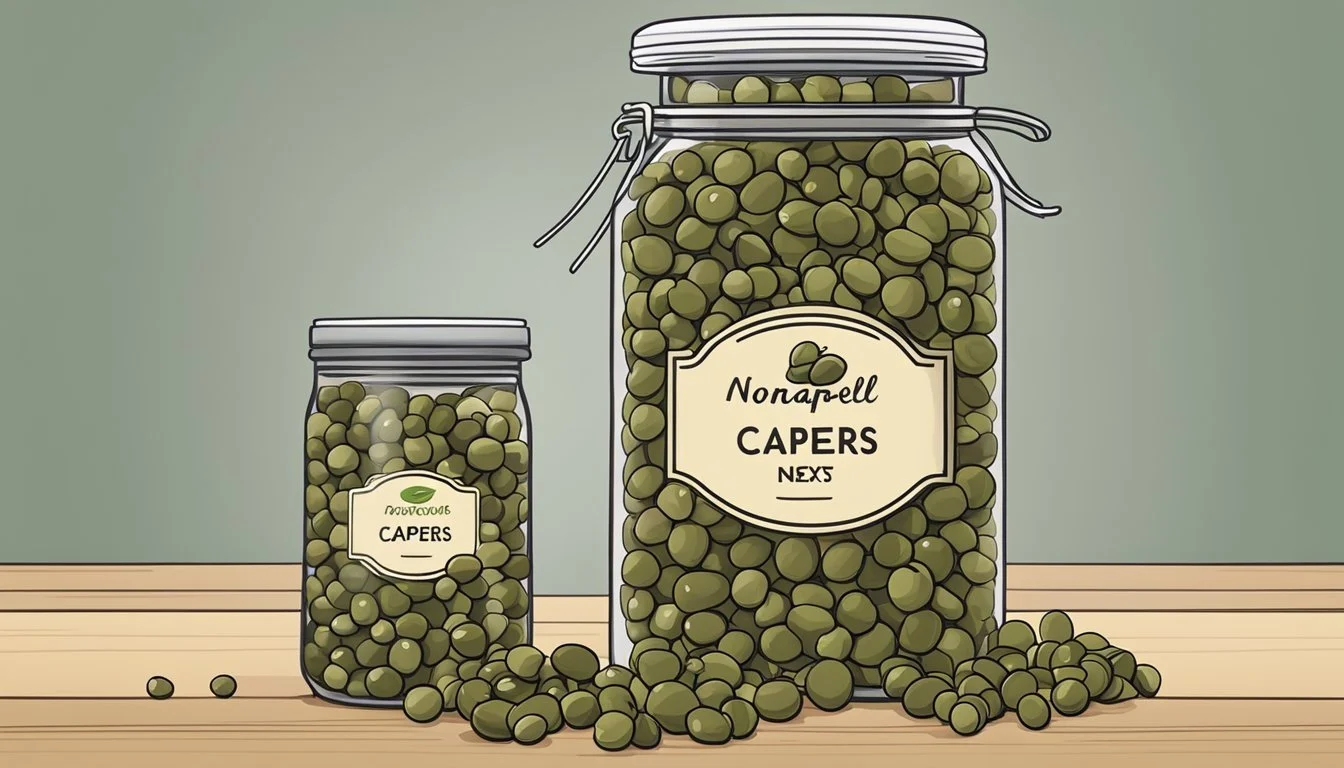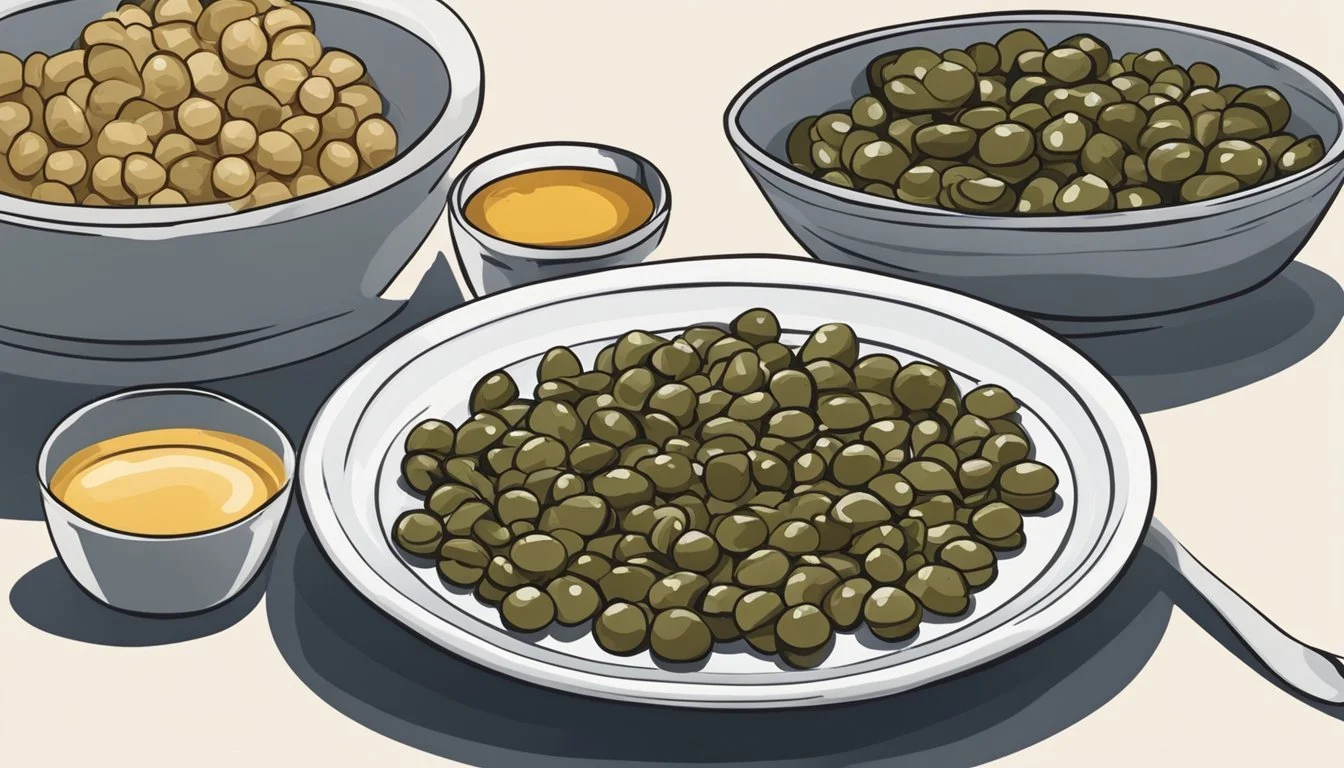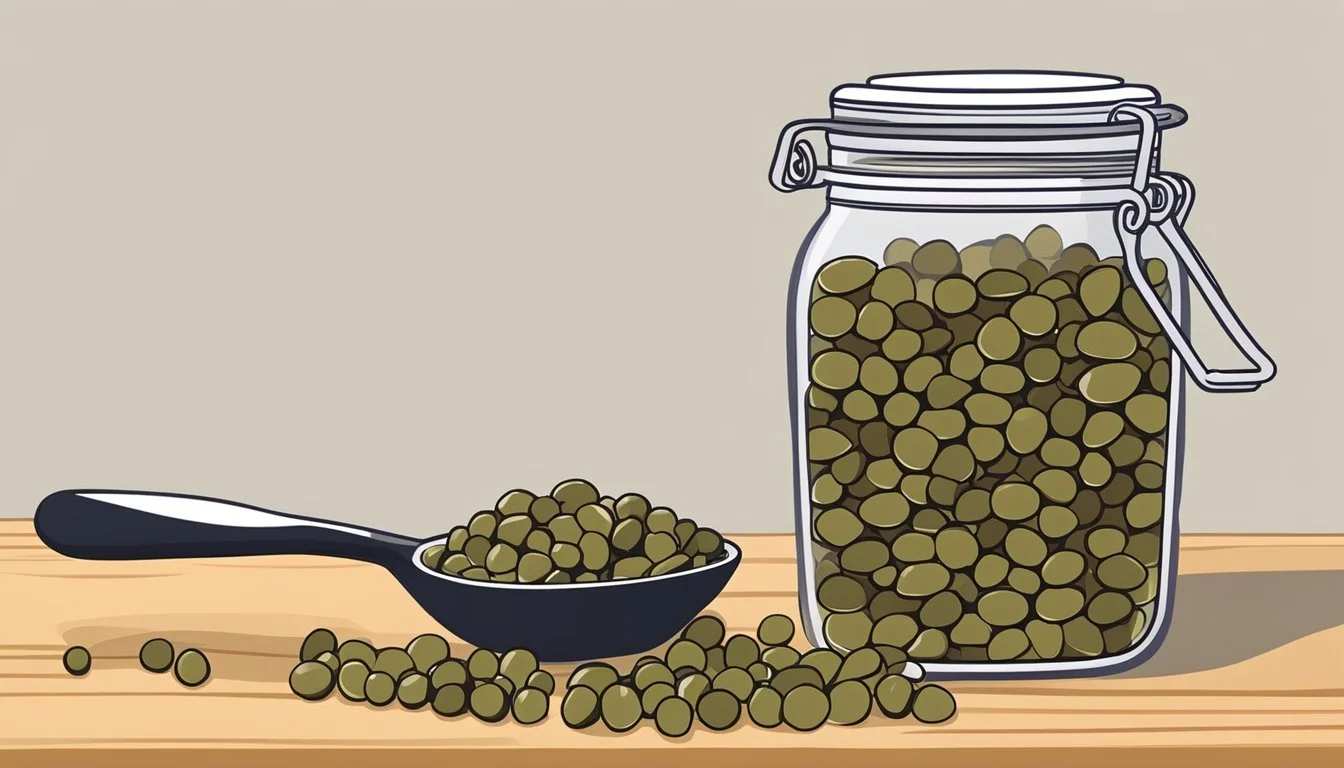How to Substitute Nonpareil Capers for Brined Capers
A Simple Swap Guide
Capers, (What wine goes well with capers?) the small, green buds from the Capparis spinosa plant, are quintessential to many dishes, imparting a unique, tangy flavor that is both salty and slightly floral. They are often used in Mediterranean cuisine and have become a staple in kitchens around the world. The caper's distinct flavor comes from the mustard oil they naturally contain, which is intensified through the process of brining or salting.
When it comes to cooking, chefs and home cooks alike might find themselves in need of a substitute for capers, particularly when a specific type, like nonpareil capers, is not available. Nonpareil capers, known for being the smallest and most desirable variety, are often preferred for their more delicate texture and taste. However, when these are not on hand, brined capers can be a suitable alternative, as they are more commonly found and still offer the characteristic caper flavor profile necessary for the integrity of the dish.
Understanding the nuances between different types of capers is crucial for making an effective substitution. Nonpareil capers and brined capers can vary in size and intensity of flavor, and recognizing these differences ensures that adjustments in proportions and preparation are made. This ensures that the integrity of the dish’s intended flavor is maintained, even with a substitute ingredient.
Understanding Capers
Before delving into the various substitutes for nonpareil capers, it's essential to understand what capers are and the differences brought by their varieties and sizes.
Varieties and Sizes
Capers come from the Capparis spinosa, a perennial plant native to the Mediterranean. They are edible flower buds, which, if not picked, blossom into beautiful white flowers. Upon harvesting, capers undergo curing either through brining in vinegar or salting, which enhances their flavor.
Most commonly, capers are categorized by size. The smallest variety available is known as non-pareil capers, typically measuring up to 7 mm. These are often considered to be of the highest quality due to their more intense flavor and tender texture. They are a chef's favorite for their nuanced taste and size, which does not overpower dishes.
Following non-pareil, there is a progression in size:
Surfines (7-8 mm)
Capucines (8-9 mm)
Capotes (9-11 mm)
Fines (11-13 mm)
Grusas (14+ mm)
As capers increase in size, they become more mild in flavor. In recipes, such subtleties can make a significant difference in the intended taste profile.
The caper berries are a larger fruit form of the Capparis spinosa and carry a more subdued taste compared to the brined or salted caper buds. Due to their size and different texture, caper berries are less commonly used as a direct substitute for capers in recipes.
Another alternative to capers often suggested are nasturtium seeds, which have a similar piquancy. While not from the same plant, these seeds can mimic the caper's sharpness when pickled and offer an acceptable replacement in the absence of true capers.
Culinary Uses of Capers
Capers provide a distinctive sour and salty flavor that enhances a wide array of dishes. They are picked as flower buds, then brined or salted and used primarily in Mediterranean cuisine.
Flavor Profile
Capers are known for their bright acidity and a briny, salty tang with hints of lemon. They can bring a burst of flavor to various recipes, similar to the way a splash of vinegar or a squeeze of lemon might. Their unique taste is pivotal in dishes where a contrast to richer flavors is desired.
Common Dishes
Capers are a versatile ingredient, used across a spectrum of recipes from salads to main courses. Below are some common dishes and pairings:
Tuna salad: Capers add a zesty punch.
Salads: Can be sprinkled in for an acidic touch.
Sauces and Pizzas:
Pasta puttanesca: Capers are a key ingredient in this robust sauce.
Spaghetti alla puttanesca: Here, they provide a tangy counterpoint to the tomatoes and olives.
Bruschetta: A few capers can be included for extra zip.
Pizza: Scattered atop as a garnish for their tangy taste.
Protein Dishes:
Chicken piccata (What wine goes well with chicken piccata?): Capers are essential in creating the dish's signature lemony sauce.
Fish dishes: Often used as a complement to seafood, enhancing the fresh flavors.
Pastas:
Pasta dishes: Capers can be added to pasta for a sharp and salty highlight.
Convenient substitutes for capers include chopped green olives, which share the capers' salty and slightly bitter attributes. When swapping capers for another ingredient, such as green olives, it's important to consider the size and potency differences; for example, chopped green olives can be more prominent in size and may carry a more intense flavor, so the cook might adjust according to taste and aesthetic preferences.
Substituting Capers
When cooking, one may need to replace nonpareil capers with other similar ingredients due to availability or preference. Understanding the factors for substitution and knowing viable alternatives ensures culinary success.
Factors in Substitution
Taste, texture, and size are crucial when substituting capers. Nonpareil capers are known for their distinct piquant flavor and tender texture. The size of the substitute should also be considered as it can affect the dish's final appearance and bite.
Caper Substitutes
Caperberries: These are larger but can be minced to closer match capers' size. Use in a 1:1 ratio.
Green Peppercorns: These offer a similar piquant taste. Use sparingly.
Kalamata Olives: Chop them to size; they bring a similar brininess to dishes. A bit saltier, so adjust accordingly.
Dill Pickles: Finely chopped, they provide a sour note that mimics capers. Aim for roughly a 1:1 substitution.
Anchovies: (What wine goes well with anchovies?) While more fishy, they add a comparable umami punch. Best used in small quantities.
Nasturtium Buds: Known as "poor man's capers," these can be pickled and used when capers are not available.
It's essential to adjust these substitutes for taste, as each brings its unique flavor profile to the dish.
Brined vs Salt-Cured Capers
When substituting nonpareil capers, it's important to understand the nuances between brined and salt-cured varieties as their distinct flavors and textures can affect the outcome of a dish.
Flavor Differences
Brined capers are commonly preserved in a mixture of vinegar, water, and salt, which imparts a sour and tangy flavor profile. They can have a residual vinegar taste that is often briny and acidic, but this can be mitigated with a quick rinse.
Sourness: detectable
Tanginess: prominent
Saltiness: moderate
Bitterness: mild
Salt-cured capers, on the other hand, are dried and then packed in salt, leading to a more pronounced salty flavor and a hint of bitterness. Their taste is often described as pungent with a citrusy undertone. Unlike brined capers, salt-cured ones require thorough rinsing or soaking to remove excess salt.
Sourness: less pronounced
Tanginess: subtle
Saltiness: intense (prior to rinsing)
Bitterness: more noticeable
Culinary Impacts
The texture and flavor intensity of capers varies between these preservation methods, which can influence their application in recipes.
Brined capers:
Retain a firm texture.
Introduce a brighter, more vinegar-forward flavor to dishes.
Maintain a consistent brininess.
Salt-cured capers:
Tend to be more tender.
Offer a deeper, more complex flavor profile.
Require dilution of their saltiness to balance flavors.
Whether one chooses to use brined or salt-cured capers often depends on personal preference and the specific culinary context. Substituting one for the other should be done with consideration for the desired flavor balance and texture within the dish.
Recipe Adaptations
When substituting nonpareil capers for brined capers, it's important to consider the balance of acidity and saltiness that capers bring to dishes. A direct 1:1 substitution can be made, but slight adjustments may be necessary depending on the dish to maintain the intended flavor profile.
Meat and Chicken Dishes
In dishes featuring meat and chicken, nonpareil capers can add a vibrant kick. They should be rinsed to remove excess salt and then added whole or chopped to the recipe.
For a marinade, combine olive oil, lemon juice, and a pinch of black pepper with nonpareil capers for a Mediterranean-style preparation.
When preparing dishes with artichoke hearts or sun-dried tomatoes, finely chopped nonpareil capers complement these robust flavors.
Seafood and Pasta
Seafood and pasta often benefit from the distinctive taste that nonpareil capers provide.
Sprinkle nonpareil capers over dishes like tuna steaks (What wine goes well with tuna steak?) or linguine with clam sauce, adjusting with a splash of lemon juice or vinegar solution to achieve the desired tartness.
Fresh thyme and dill are herbs that pair well with nonpareil capers, enhancing the overall flavor of seafood and pasta dishes.
Sauces and Dressings
The impact of nonpareil capers in sauces and dressings is both nuanced and substantial.
A classic vinaigrette can be made using nonpareil capers, olive oil, a touch of garlic, and lemon juice or a mild vinegar solution to balance out flavors.
For creamy dressings, caper brine can be a secret ingredient, adding depth to the taste; use it sparingly to not overpower the dressing.
Additional Flavor Enhancers
In seeking alternatives to nonpareil or salt-cured capers, one should consider ingredients that can replicate the distinctive blend of piquancy, saltiness, and brininess capers bring to dishes. By integrating herbs, acidic components, and other salty elements, a cook can effectively enhance flavors in caper-centric recipes.
Herbs and Spices
Herbs and spices offer aromatic qualities and can impart similar flavors that one might associate with capers. Dill is an excellent herb with a slightly grassy and citrus-like profile that complements fish and sauces like tartar sauce. Another option is black pepper; its sharp, earthy heat can mimic some of the peppery aspects of capers.
Dill: An herb that pairs well with fish, potatoes, and cream-based sauces.
Black Pepper: A versatile spice that adds heat and complements many savory dishes.
Acidic Components
Acidic components are critical in mirroring the tanginess of brined capers. Pickled red onions bring a vibrant zing to dishes, both in taste and color, and can be sliced or diced as needed. They are not just a flavorful addition to recipes but also provide a visual appeal that is often associated with capers.
Pickled Red Onions: An excellent source of bright acidity and color for salads, sandwiches, and tacos.
Other Salty Elements
To emulate the saltiness of capers, various ingredients can be considered. Green peppercorns provide a briny sharpness similar to capers and are often used in peppercorn sauces for steaks. Black olives, being salty and slightly bitter, are an effective substitute when chopped finely. They contribute a level of umami and richness that enhances savory dishes.
Green Peppercorns: Offer a briny sharpness great in steak sauces and pâtés.
Black Olives: A salty substitute that brings added depth to dishes, especially when combined with umami flavors.
Nonpareil Capers in Dietary Contexts
In the realm of Mediterranean cuisine, nonpareil capers are a prominent feature, especially valued for their quality and vegetal notes. They serve as an essential component in various dishes, from antipasti to main courses, often considered an affordable substitute for other brined veggies, as they are typically free from additives.
Health Considerations
Nonpareil capers are low in calories and contain no cholesterol or trans fats. Their pickling brine, while enhancing flavor, can add significant sodium content to the diet. Individuals with high blood pressure or those following a low-sodium diet should consider moderating their intake of nonpareil capers. They should also look for brands that offer lower sodium options to enjoy nonpareil capers' unique flavor with less health-related concerns.
Nutritional Content
The following table outlines the general nutritional content of nonpareil capers:
Nutrient Amount per 100g Energy 23 kcal Protein 2.36 g Fat 0.86 g Carbohydrates 4.89 g Fiber 3.2 g Sugars 0.4 g Sodium 2960 mg Vitamins and Minerals Varied amounts
Nonpareil capers are a source of vitamin K, crucial for blood clotting and bone health, and tend to include vitamin A, calcium, and iron. Their unique phytonutrients, such as rutin and quercetin, contribute to their antioxidant properties, making them a valuable addition to a health-conscious diet. Despite their small size, capers punch above their weight in delivering these dietary benefits.
Purchasing and Storing Tips
When selecting and storing capers, it's important to distinguish between non-pareil capers and their larger counterparts, as well as understanding the implications of brined versus salt-cured preservation methods.
Selecting Quality Capers
To ensure the purchase of high-quality non-pareil capers, one should look for capers that are small, green, and firm. These are considered superior due to their more delicate texture and intense flavor. Non-pareil capers, usually found cured in brine, are prized for their pea-sized dimensions and are often the chef's choice. Alternatively, salt-cured capers offer a more intense flavor; however, they need thorough rinsing before use to remove excess salt.
Capotes, the larger capers, while still flavorful, are not as highly regarded as non-pareil capers. If faced with the choice between brined and vinegar-preserved capers, it's important to note that vinegar can sometimes overpower the caper's natural flavor profile.
Preservation and Shelf Life
Once purchased, capers should be stored properly to extend their shelf life. Brined capers should be kept in their original liquid in a sealed container to prevent spoilage. Here's a concise table to help consumers:
Type Storage Container Location Shelf Life Brined Capers Sealed glass or plastic container Refrigerator Several months Salt-Cured Airtight container Refrigerator Up to 1 year
For prolonged freshness, one should ensure capers remain submerged in their brine or salt and avoid using a wet utensil to fetch them. Capers are past their prime when they become mushy or if the brine becomes cloudy or emits an off odor.
Conclusion
In the realm of cooking, capers play a pivotal role, adding a distinct tanginess and sophistication to dishes. Nonpareil capers, specifically harvested from the Capparis spinosa plant, are regarded for their more delicate size and flavor.
Key Takeaways:
Size and Flavor: Nonpareil capers are smaller with a milder taste compared to brined capers, which often exhibit a more robust flavor due to the brining process.
Substituting Nonpareil for Brined: To substitute nonpareil for brined capers, one should adjust quantities to preserve the desired flavor intensity without overshadowing other ingredients.
When considering high-quality content, one acknowledges that nonpareil capers often impart a nuanced flavor that is not easily replicated. Their role cannot be overstated, as even the slightest variation in caper type can transform a dish's overall profile.
Practical Tips:
Rinsing: Brined capers should be rinsed before use to reduce saltiness. This step can be omitted with nonpareil capers if a less salty flavor is desired.
Measurement: Start with a 1:1 substitution ratio but adjust based on personal taste and the unique flavor profile of the dish.
Culinary enthusiasts and chefs alike value authoritative resources to guide their use of capers in creating exemplary cuisine. In conclusion, understanding the characteristics and proper application of nonpareil capers ensures that the integrity of the original recipe is maintained, while still allowing room for individual nuances and preferences.









